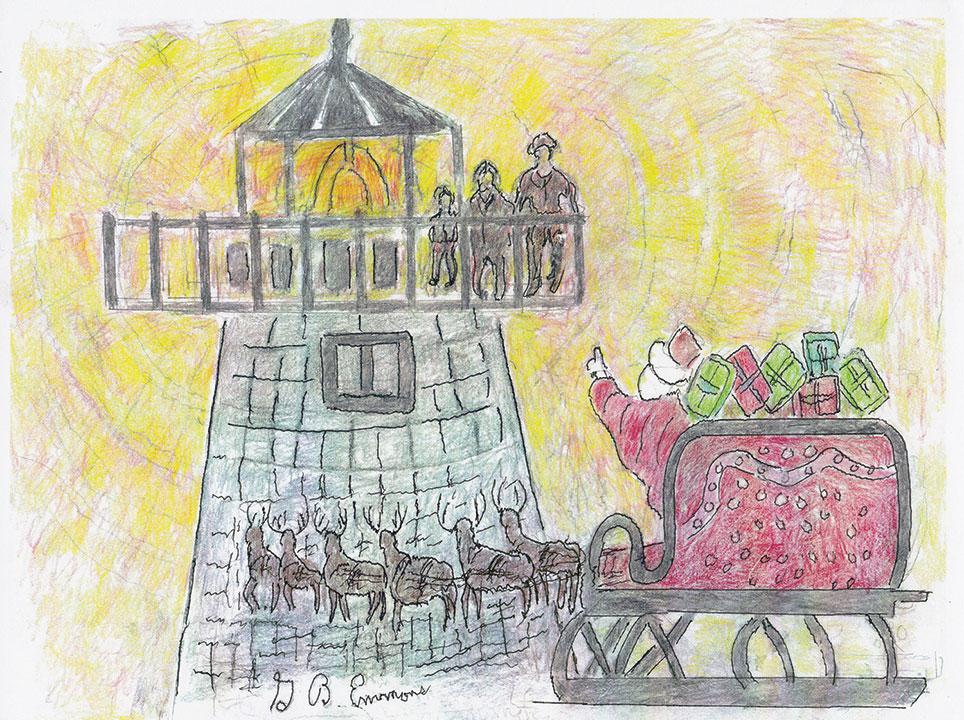On Christmas day, before the turn of the 20th century of the historic era of New England, lighthouses beaconed their beams and blew their fog horns to warn shipping lanes of potential dangers that might lie ahead.
At that critical position as lighthouse keeper to the safety of nautical traffic for the decades ahead, they were frequently called into action as heroic saviors of seamen’s lives as well as prevention of shipwrecks themselves on rocky shoals. Women were often heroines instead of men, as keeper Ida Lewis of Lime Rock Light in Newport, Rhode Island, repeatedly saved one life after another during her tenure in that rescue responsibility.
Whole families of men, women and children shared the isolated lifestyles in remote locations of the living quarters, especially lonesome on the eve of holidays like Christmas when youngsters “dream of sugar plums dancing in their heads and that St. Nicholas with gifts soon would be there.” However, the possibility of this youthful anticipation that could not happen was brought into reality by the so-called flying Santa Clause by the name of aerial pilot William Wincapaw, who dared to drop presents from his single-engine plane for youngsters waiting down below to catch them.
At Christmas in 1929, he shrugged off bad weather reports and took off above the rocky coast of Maine in his mission that almost cost him his life. As he entered a raging snowstorm, he could not even see out his window, and his instruments were not working properly. He was blown off his course by heavy winds flying blind and soon was almost out of fuel. Dropping down below the storm, the beam from Dice Head Light in Castine, Maine and five more lighthouses soon led him safely to land in Rockland, Maine. A grateful pilot took off a few days later with cookies, coffee, tea and a copy of Farmer’s Almanac.
A coffee manufacturer subsequently loaned Wincapaw a seaplane to land on the water and deliver presents, and children collected rocks and sticks to signal all those still passing high overhead, saying thanks for a Merry Christmas.
Wincapaw retired in 1947, and a flying club of volunteers was formed to replace him. He was finally killed when his plane crashed in Rockland harbor. Hundreds attended his funeral, and lighthouses all over New England sounded their foghorns in his honor.
In 1998, the Friends of Flying Santa was incorporated for the future that started from materializing young children’s Christmas wishes while living at a New England lighthouse.
By George B. Emmons
